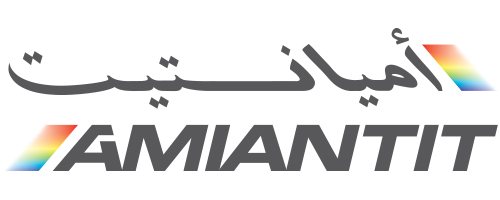Power-to-gas Market By Technology (Electrolysis (Hydrogen Gas), Methanation (Methane Gas)); By Application (Industrial Use, DG or Central Power Plant, Gas Filling Stations, Home Heating, Others); By Type (Wind Power-to-Gas, Solar Power-to-Gas, Biomass Power-to-Gas, Other Industrial Processes); By Capacity (Less than 100 kW, 1000 kW and Above, 100-999kW); By End-User (Utilities, Industrial, Commercial); By Region (North America, Europe, Asia Pacific, Latin America, Middle East & Africa) - Global Market Analysis, Trends, Opportunity and Forecast, 2022-2032
Power-to-gas Market Overview and Definition
The global power-to-gas market is projected to reach USD 32.5 million in 2021 to USD 79.9 million by 2032, at a CAGR of 10.5% during the forecast period 2022-2032. With the rapid growth in population global and increase in urbanization that the world is able to witness, there seem to be no chances of the consumption of the resources for the fulfillment of needs of all kinds of the people and the industries coming to any kind of halt. Instead, attributing to the above factors, the consumption is only going to expand as a direct effect of the increase in the levels of demand. Where non-renewable resources are coming to their ending phases with their ever increasing daily global consumption, the only way to cater to the increasing needs and demands would be to find a way out to make use of the renewable energy resources. One highly effective method to make use of these resources, which is finding its way out globally is the Power –to gas (often abbreviated P2G) method. In this system, electrical energy is converted into hydrogen or methane syngas via respective procedures such as electrolysis or methanation, as per requirement and the gas produced in made available to be used in various industrial processes. Also, power –to gas system is used to store excess energy from renewable energy sources for later use for various purposes including industrial, heat supply, transportation, water production etc.
The power-to-gas market refers to the production of hydrogen or synthetic natural gas (SNG) from renewable electricity, usually through the process of electrolysis. The technology enables the storage and utilization of renewable energy sources, and is seen as a key solution for integrating renewable energy into existing energy systems.
The market for power-to-gas technology is expected to grow significantly in the coming years, driven by the increasing demand for renewable energy and the need for energy storage solutions. Europe is currently the largest market for power-to-gas technology, with Germany, Denmark, and the Netherlands leading the way in terms of installed capacity. In 2020, Germany alone had 54% of the world's installed power-to-gas capacity. However, other regions are also expected to see significant growth in the coming years, with Asia Pacific and North America expected to be key growth markets.
Power-to-gas Market Key Drivers
There are several key drivers contributing to the growth of the power-to-gas market:
Increasing demand for renewable energy: As the world moves towards a low-carbon energy system, there is a growing demand for renewable energy sources such as wind and solar power. Power-to-gas technology provides a means to store and utilize this renewable energy, helping to ensure a consistent supply of electricity even when wind and solar resources are unavailable.
Energy storage needs: Energy storage is becoming increasingly important as the share of renewable energy in the electricity mix grows. Power-to-gas technology can be used as a form of energy storage, allowing excess electricity to be stored in the form of hydrogen or synthetic natural gas, and then used when demand is high.
Carbon reduction goals: Many countries and regions have set ambitious carbon reduction goals, with the aim of achieving net-zero emissions by 2050. Power-to-gas technology is seen as an important tool to help achieve these goals by enabling the use of renewable energy and reducing reliance on fossil fuels.
Government support and policies: Governments around the world are supporting the development of the power-to-gas market through policies such as subsidies, tax incentives, and regulations. For example, the European Union has set a target of having 40 GW of electrolysis capacity by 2030, and is providing funding and regulatory support to help achieve this goal.
Technological advancements: Advances in power-to-gas technology are helping to reduce costs and improve efficiency, making it a more attractive option for energy storage and integration into existing energy systems.
The growth of this market is attributed towards pertaining factors including decreasing cost of wind and solar energy generation, effective utilization of renewable energy resources, rising initiatives to reduce the carbon footprint across the globe, integrated management of power and gas, increasing awareness regarding environmental safety and security, increase in the share of renewable energy in the power generation mix.
With exhaustive utilization of carbon as a primary concern for the global energy industry, to reduce the impact of climate change due to the growing greenhouse gases across the world, initiatives are being taken to reduce emissions; renewables are becoming the fastest-growing energy sources for electricity generation. The increase in renewable energy uses is likely to create an opportunity for the power to gas market.
Moreover, Power-to-gas systems are an effective way of integrating renewable sources with total power generation sources. With around half a million villages and towns across the globe without reliable and affordable electricity, P2G systems could be deployed accordingly in the required regions with additional purposes like stabilizing the grid in order to mitigate the effects of excess electricity caused by fluctuating sources and for the improvement of security of the energy supplies. Along with being cheaper in comparison to methane production from the power to methane facilities, P2G is often considered the most promising technology for seasonal renewable energy storage. Such benefits are expected to drive consumer preference for this technology, thereby driving the power-to-gas market.
Furthermore, the share of solar PV energy sources is expected to contribute nearly 39% in the total energy generation source by 2050 in the Middle East & North Africa and The European Union is expected to have the possibility to grow the renewable energy share from about 17% to over 70% by 2050. Such developments are expected to increase the share of renewable energy capacity in the total power generation mix across the globe.
Power-to-gas Market Challenges
While the power-to-gas market presents many opportunities, there are also several challenges that need to be addressed in order to fully realize its potential:
Cost: The cost of power-to-gas technology is currently higher than that of traditional fossil fuel-based energy sources, which can make it less competitive in some markets. While the cost of power-to-gas is expected to decrease as the technology matures, it is still a significant challenge that needs to be addressed.
Efficiency: The efficiency of power-to-gas technology is currently lower than that of other energy storage options such as batteries. While research is underway to improve the efficiency of power-to-gas systems, it remains a challenge to make it a competitive option for energy storage.
Scaling up: While power-to-gas technology has been successfully demonstrated in smaller-scale projects, scaling up to large-scale commercial projects presents a challenge. It requires significant investment in infrastructure, technology, and regulations to ensure that the technology can be integrated into existing energy systems.
Infrastructure: The production, storage, and transportation of hydrogen or synthetic natural gas requires significant infrastructure investment. Building this infrastructure can be a challenge, particularly in regions with limited existing infrastructure.
Safety and regulation: The production, storage, and transportation of hydrogen or synthetic natural gas can pose safety risks if not managed properly. Ensuring the safety of the technology and developing appropriate regulations presents a challenge.
Power-to-gas Market : Report Scope |
|
|
Base Year Market Size |
2021 |
|
Forecast Year Market Size |
2022-2032 |
|
CAGR Value |
10.5 % |
|
Segmentation |
|
|
Challenges |
|
|
Growth Drivers |
|
Power-to-gas Market Segmentation
By Technology
- Electrolysis (Hydrogen Gas)
- Methanation (Methane Gas)
By Application
- Industrial Use
- DG or Central Power Plant
- Gas Filling Stations
- Home Heating
- Others
By Type
- Wind Power-to-Gas
- Solar Power-to-Gas
- Biomass Power-to-Gas
- Other Industrial Processes
By Capacity
- Less than 100 kW
- 1000 kW and Above
- 100-999kW
By End-User
- Utilities
- Industrial
- Commercial
By Region
- North America
- Europe
- Asia Pacific
- Latin America
- Middle East & Africa
Power-to-gas Market: Regional Analysis
Countries across the world, such as India, Germany, Saudi Arabia, and the UAE, have set targets to increase the number of renewable energy generation sources to increase the share of renewable energy in their power generation mix.
Europe is expected to hold major share of the global power-to-gas market during the period by growing power-to-gas projects in countries such as Germany, France, Denmark, and the Netherlands for effective utilization of renewable energy sources and as a result of increasing demand for renewable energy sources and the developments in hydrogen generation in the region. Demand for power-to-gas technology has been rising significantly in Germany.
Furthermore, nearly 64 power-to-gas plants are in Germany, with a maximum count of power-to-methane plants. And apart from existing plants, there are nearly 30 proposed power-to-gas plants in Europe. Such developments are expected to increase renewable energy generation capacity in the region.
Asia Pacific is likely to be the key potential region of the global power-to-gas market owing to factors such as increase in number of small and mid-scale industries in the region as well as urbanization, especially in developing countries such as China and India.
North America is also an important region of the global power-to-gas market. Demand for power-to-gas in the region is driven primarily by the rise in demand for hydrogen for commercial applications such as fuel cell transportation and stabilization of the power generation capacity.
Power-to-gas Market: Key Players
- Siemens
- Thyssenkrupp AG
- Man Energy Solutions
- Engie,
- Exytron Vertrieb GmbH
- Hydrogenics
- NEL ASA
- Green Hydrogen Ineratec
- ITM Power
- Uniper SE
- Hitachi Zosen Inova AG.
- Mcphy Energy S.A
Power-to-gas Market: Recent Developments
In September 2019, BMW AG unveiled its Hydrogen NEXT fuel cell vehicle, which is expected to be available for customers in 2025.
In Oct 2020, Engie EPS unveiled its hydrogen-based energy storage system built with its proprietary technology in Greece. The project aims to demonstrate the advantages of hydrogen-based technologies for renewable energy storage in isolated and off-grid areas and has been awarded as the best renewable energy project in the Innovation section at the European Sustainable Energy Week 2020.
In Oct 2020, Electrochaea GmbH, a European provider of renewable methane technology, established a California-based US subsidiary, Electrochaea Corporation, to accelerate the commercial roll-out of its technology in North America. Electrochaea employs a patented biocatalyst (BioCat) to convert low-cost and stranded electricity and CO2into pipeline-grade renewable gas. This gas can be directly injected into the existing natural gas grid or used immediately. The core of the power-to-gas (P2G) technology is the proprietary biocatalyst that can be deployed in a simple and cost-effective energy conversion system.

Need Customized Report for Your Business ?
Utilize the Power of Customized Research Aligned with Your Business Goals
Request for Customized Report- Quick Contact -
- ISO Certified Logo -

















